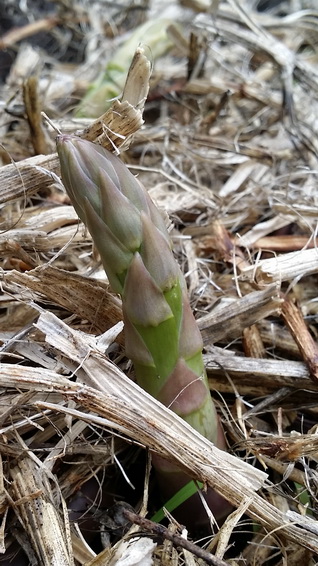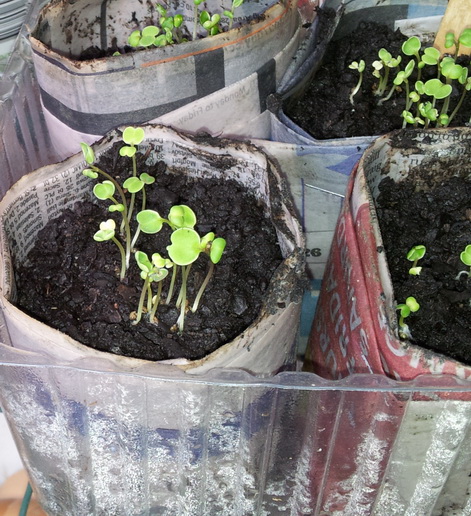


AUGUST IN MY GREEN GARDEN
This year is just whizzing past! We’re getting to the exciting part of it now, with all systems go for the next few months to get ready for the summer veg.
It is still near freezing at the moment, or at least that’s what it feels like. The frosty nights however do have their place. The stone fruits need a certain number of hours of chilling below 10 deg.C in order to produce more fruit, so every cold night counts! The cold is also a boon for vegie gardeners in that it breaks the breeding cycle of many insects that might otherwise survive overwinter. As well as that, it provides slower growing conditions so that broccoli heads can thicken up and garlic gets its winter chill before it thickens up in spring. The chill is all good – and it makes us appreciate any sunny days all the more!
In my August green garden, my aim is to be prepared. I want to get the summer seeds happening so that, as soon as the soil is warm enough, they can go straight in. In August I tend to sow seeds of favourite tomatoes that I had saved from last season into jiffy pellets. With enough warmth they quickly spring to life. The only issue is getting the warmth to them.
It is far too cold to do this without any artificial heat, so some options need to be explored. In the past, I used the heat from the top of the hot water unit, which was in the laundry, to get the seed raising mix warm enough. That very good method was lost to me when we changed to a solar hot water unit located outside. So instead I use the heat from one of our compost bins to supply the warmth needed. This works a treat, but I have to check daily to see if the seeds have germinated or not, to move them immediately to a well-lit position, otherwise they became lanky too quickly.
This method is a very basic one: simply add some compost activator (a bag of coffee grounds does the trick but otherwise anything else high in nitrogen), stir up the compost to get it heating and then put the seedling trays on top of the heated compost, in one of the enclosed style of compost bins. To increase the heat even more, I put the punnets in clear lidded containers (such as strawberry punnets). I do have a heated seed mat but they use electricity and I like the idea of DIY. However, keeping the whole setup indoors means that I can keep a closer eye on progress of the seedlings.
Of course, none of this is necessary if you start seeds when it is naturally warmer, but sometimes when the growing season is too short to get vegies ripening quickly enough (I am thinking eggplants in my case), you want to have them ready to get them in the ground ASAP. Yes, I know that I could just buy seedlings, but that’d be too easy wouldn’t it??! No, I like the variety that comes with seeds and the awe that comes with actually having seeds germinate!
Other things in my garden:
- Seedling trays of lettuce greens – time to sow some more. These don’t need heat to germinate so outside it is with them.
- Sprinkle wood ash from our fireplace around the growing peas and the brassicas. The bit of calcium that comes with them, the alkalinity and the help with pest control makes it worth doing. And the fact that we have plenty of ashes this year to get rid of, courtesy of the abovementioned cold nights!
- Some of the winter greens are finishing so I will start preparing the beds in anticipation of the spring plantings. This means moving out some of the compost that has been maturing in the bins. This also means that I can make a hot compost heap in the emptied bin with all of the materials (autumn leaves, coffee grounds, chook poo) that I have been stockpiling.
- Weeds are starting to make their presence felt with lengthening daylight hours. Time to get to them before they set seed is a very worthwhile activity. Don’t waste their potential. Add them to a large bucket of water and leave them to steep for a fortnight to make a lovely weed tea (for the garden, not you!).
- My asparagus is starting to burst through. Yippee! This will be harvested until about October.
- August means that buds on the stone fruit will soon be swelling and indeed, I have seen the pink of the Early Moorpark apricot buds showing, and the whites of the almond tree beginning. This is a timely reminder to choose a dry day and start spraying to stop Leaf Curl on the peach and nectarines. Last year I sprayed three times, at fortnightly intervals and pretty much staved off this disfiguring fungal problem. You do need to choose the days and make sure that rain is not imminent so that the copper in the spray solution has a chance to kill off the fungal spores residing in the bark. Timing is critical because once the buds open, it is too late.
- August is when I do some soil improvement around the fruit trees to help them along when they burst into growth. Adding compost, cow manure, some pelletised manure, rock dust - all of these nutrients feed the soil around the trees and help the trees along by keeping the soil healthy.
This month is the last of winter and the last with a bit of breathing space before the onslaught of the silly season – Spring that is!
IN THE PRESERVING KITCHEN
- Some more Jerusalem Artichoke pickles before the artichokes that are stored start to sprout once again. They are so tasty and crunchy and a great way to use them up.
- My favourite marmalade would have to be Cumquat and Tequila. The cumquats will be just about ripe soon. Fiddly to process but worth it!